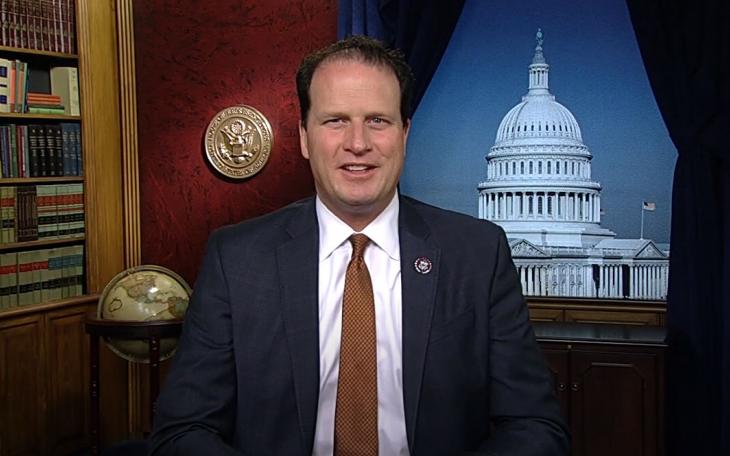Open questions and previous areas of disagreement between the San Angelo Coalition of Police (SACOP) and City staffers were cleared up at Wednesday’s Meet and Confer, when the group discussed the City’s pay proposal and members of both sides discussed their definitions of what constitutes a retention problem.
Sergeant Korby Kennedy, President of SACOP, introduced the agenda item to discuss the previous pay proposal by citing areas of concern the coalition has identified in the language of the proposal. Kennedy mentioned three primary areas, including the City’s request for a “funding mechanism”, the adjustment of midpoints of salary ranges and the ever-contentious retention issue.
In his introduction, Kennedy stated the coalition perceived staff felt the coalition may have been uncooperative or not interested in helping find a funding mechanism to support the pay raise request. Naming specific items in the department’s operations, existing contract and in the pay raise request the PD submitted several meetings ago, Kennedy asserted that the police department has historically worked with the City to address budget concerns and to cut costs, and will continue to do so in the future. Among the examples cited were the department switching to more fuel-efficient vehicles, inclusion of part-time officers and a physical fitness standard.
Kennedy explained that he wanted to clarify that the department is intent on helping finding savings, and that they will continue to look for those areas as they have in the past. Officer Rick Tinsley then took the floor and proposed an idea he came up with to cut some costs on the monthly payroll process.
“Every payday I get a check stub, and it looks just like a paycheck…I got to thinking about that whole process. They have to be printed, then they have to be delivered to I think City Hall, then they get divided up, then somebody from the police department has to come over and pick up our copies, then they get over to the PD and the…clerks in the Chief’s office divide them up into sections…then they get handed out. That’s hours of manpower that doesn’t have to be done,” Tinsley said.
Police officers are required to check their email every time they come to work. Tinsley proposed that the City begin emailing those stubs and set up direct deposit or pay cards for all of those who still receive paper checks to cut back on supply costs and time spent on preparing the stubs.
Moving on the next issue, Kennedy addressed the City’s adjustment of the midpoints of salary ranges in their proposal last meeting. The department had initially requested to be at +/- 3 percent of the averages of starting and top salaries in benchmark cities. Officer pay scales are set up with ranges in each rank, broken down by one-year steps. The problem with adjusting the midpoints, Kennedy explained, is that San Angelo has more steps than many of their benchmarks, meaning that it takes longer to get to the midpoint, which is still 85 percent lower than the average of other cities.
The current contract between the City and the PD did some work to adjust the step issue, however in the process the department drifted further away from the average.
“Prior to meet and confer, we were on a 25-step pay scale,” Kennedy says. “That means that you get a small stipend at every anniversary day. The problem with that is, on a 25-step program…the top pay is at 25 years. Police officers can retire at 20, so you’re eligible to retire before we make our most pay.”
Kennedy noted that the state average is a range of 12-16 years, and that the department opted for 14 when negotiating their current contract. The contract runs until Sept. 30 of this year and was set into motion five years ago. Three different contracts were discussed at that time, Council opting for this one, which would raise salaries as the steps compressed and aid in recruitment. The effect, however, ultimately set the department further behind.
“What happened is, when we cut our steps, we knew that that was going to be exponentially expensive because you’re taking that top pay and your compressing it…what the City didn’t take into account was while we’re compressing, we’re not getting across the board pay raises, so when these other cities are…we’re still getting…behind,” Kennedy said. “While our officers saw a bump in pay based on the compression of the pay scale, they never saw that in a relation to their benchmarks, so now we’re further behind than we were when we started.”
Council decided when the contract was signed that the next step would be to address retention issues, Lt. Tracy Fincher said in the meeting. Retention has been an area of misunderstanding between the City and the Coalition for the past several months, the Coalition claiming to have one, the City stating numbers don’t support that assertion.
The problem is that the City and the coalition have been using different methods to figure the loss of employees. The police look at new-hires for a particular year and follow them throughout their career. In 2004—prior to Meet and Confer—the number was the highest, 88 percent of new-hires no longer in the job.
Kennedy explained more recent numbers. “Let’s go to 2007, when we started this process. Fifty-seven percent of the employees that we hired—not the ones that had been here and they retired—the ones that we hired in that year—in 2007—are no longer here.”
Kennedy says that he would never assume that all left because of pay, but that losing 57 percent of new-hires is horrible. The rate has remained high over the past few years, fluctuating down to 31 percent in 2009 in the midst of the economic crisis and rising back up to 47 percent in 2011.
City Human Resources Director Lisa Marley said that the information on turnover is available and that she had pulled the data to assess the issue herself.
“During our current contract, I went back and I pulled all the terminations, everybody that’s left in PD just during his contract. Obviously there’s retirements in there—a lot of retirements that retention isn’t going to control—and so when I took those out and just left resignations and terminations…over the course of the contract without retirements in there, your turnover rate is 5.6 percent,” she said.
Marley explained that she and the City calculate the rate by dividing the number of slots a department is allowed to have by the number of people that have left that year.
“So we’re talking different numbers,” Tinsley said. “You’re talking 5 percent of the total population of the police department, we’re talking the number of people that were hired and have left.”
Both City staffers and members of the coalition recognized the underlying reason for the difference in opinion at this point, however it remains unclear as to whether the clarification will have an impact on how the City views the retention issue.
At the next meeting, the City and the coalition intend to discuss objectives for the contract term and to discuss different options. Wednesday, the entities discussed the longevity of the contract with the majority of both parties agreeing that a multi-year contract may be the better option.
In the interest of not having to go through the entire process of negotiating a contract on an annual basis, many were in favor of a three-year contract with goals to increase the salaries set for each year. Mention was also made of including a provision that allowed for fluctuations within the contract, so that the PD might move a higher percentage in particularly good years. Those details as well must still be worked out.
More information on the pay-raise process to date may found at the following links:
1. San Angelo Coalition of Police Present Pay Raise to City
2. City and SAPD Battle Over Budget
3. City Staff and PD Discuss Vehicle Maintainence and Allegations of Mismanagement
Subscribe to the LIVE! Daily
Required






Comments
Listed By: Joe Hyde
I'm posting this FYI. From http://www.sanangelopolice.org/page.php?kei=60
Base Salary Monthly Yearly
Police Recruit $2,932/mo - $35,194/yr
Probationary Police Officer $3,102/mo - $37,231/yr
Police Officer Step I $3,404/mo - $40,850/yr
Police Officer Step 7 $3,919/mo - $47,032/yr
Police Officer Step 13 $4,512/mo - $54,150/yr
Sergeant $4,536/mo - $54,438/yr
Lieutenant $5,217/mo - $62,615/yr
Benefits
- Log in or register to post comments
PermalinkPost a comment to this article here: